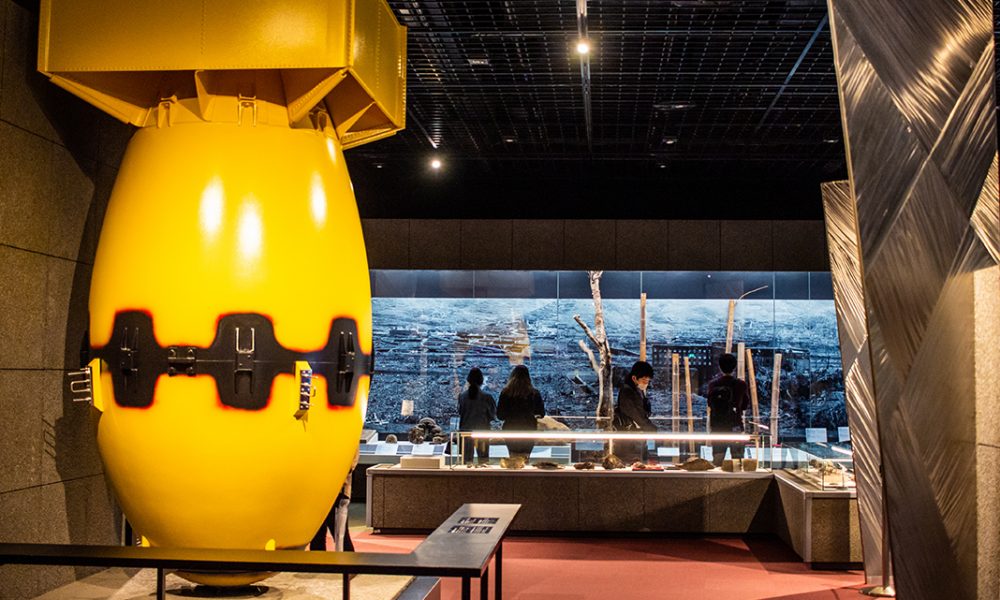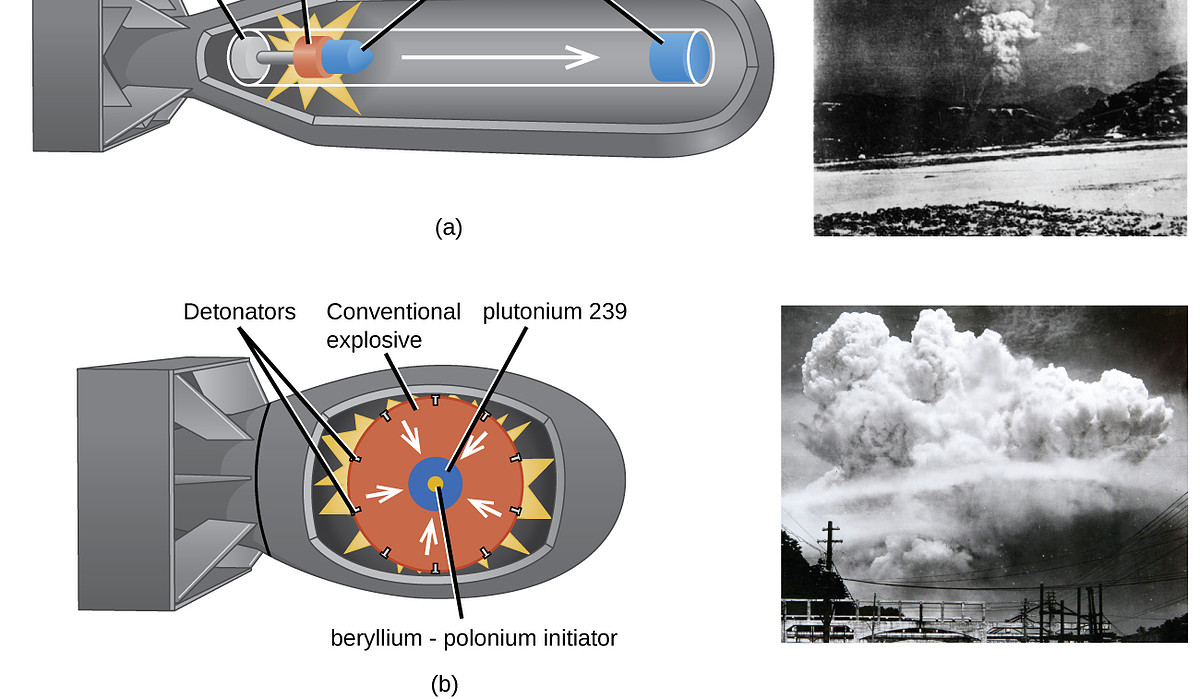Introduction
In the realm of weapons of mass destruction, two terms often come to mind: nuclear bomb and atomic bomb. While both terms are closely related and share the commonality of immense destructive power, they have distinct characteristics that set them apart. In this article, we delve into the differences between nuclear bombs and atomic bombs, exploring their construction, working principles, and historical significance.
Definition and Construction
Nuclear Bomb
A nuclear bomb, also known as a thermonuclear bomb or hydrogen bomb, derives its destructive power from a two-stage fusion-fission reaction. It involves the use of isotopes of hydrogen, such as deuterium and tritium, to facilitate the fusion process. This results in an enormous release of energy, several magnitudes greater than that of an atomic bomb.

Atomic Bomb
An atomic bomb, also referred to as an atom bomb or fission bomb, operates on a different principle. It utilizes the process of nuclear fission, where the nucleus of an atom is split into two smaller nuclei. This fission process releases a significant amount of energy and is the foundation of atomic bomb technology.
Working Principles
Nuclear Bomb
The working principle of a nuclear bomb involves a two-stage process. The first stage relies on the energy generated by a conventional explosion to compress and heat the isotopes of hydrogen. This intense heat and pressure initiate the fusion reaction, resulting in the release of a massive amount of energy. This energy is then utilized to trigger the second stage, which involves a fission reaction using a plutonium or uranium core. The energy released during fission further amplifies the destructive force of the bomb.
Atomic Bomb
In contrast, the working principle of an atomic bomb centers solely on nuclear fission. A critical mass of fissile material, usually uranium-235 or plutonium-239, is assembled by conventional explosives. When triggered, these explosives compress the fissile material, reaching a supercritical state where a self-sustaining chain reaction occurs. This chain reaction releases an immense amount of energy, resulting in a devastating explosion.
Historical Significance
Nuclear Bomb
The development and deployment of nuclear bombs marked a turning point in the history of warfare. The first successful nuclear bomb test, codenamed “Trinity,” took place on July 16, 1945, in the United States. The subsequent use of nuclear bombs during World War II on Hiroshima and Nagasaki led to unparalleled devastation, loss of life, and the realization of the horrific consequences of nuclear weapons.
Atomic Bomb

Atomic bombs were the precursors to nuclear bombs and were instrumental in shaping the course of World War II. The Manhattan Project, a top-secret research initiative led by the United States, culminated in the successful detonation of the first atomic bomb on July 16, 1945. The bombings of Hiroshima and Nagasaki brought about Japan’s surrender and ushered in the nuclear age, forever altering global politics and security dynamics.
FAQs
Q1: What is the primary difference between a nuclear bomb and an atomic bomb?
The main difference lies in their working principles. A nuclear bomb utilizes both fusion and fission reactions, while an atomic bomb relies solely on nuclear fission.
Q2: Which bomb is more powerful, a nuclear bomb or an atomic bomb?
Generally, a nuclear bomb is more powerful than an atomic bomb. The fusion reaction in a nuclear bomb releases significantly more energy than the fission reaction in an atomic bomb, resulting in a greater destructive force.
Q3: Can nuclear bombs and atomic bombs be used interchangeably?
No, nuclear bombs and atomic bombs cannot be used interchangeably. They have different construction and working mechanisms, requiring distinct designs and materials.
Q4: Are nuclear bombs and atomic bombs the only types of nuclear weapons?
No, nuclear bombs and atomic bombs are two prominent types of nuclear weapons, but there are other variations as well. For example, neutron bombs and dirty bombs are different types of nuclear weapons with distinct characteristics.
Q5: Have nuclear bombs or atomic bombs been used after World War II?
To date, no nuclear bombs have been used in armed conflicts since the bombings of Hiroshima and Nagasaki in 1945. However, atomic bombs (a type of nuclear bomb) were used in those bombings.
Q6: How are nuclear bombs and atomic bombs detonated?
Both nuclear bombs and atomic bombs are detonated through conventional explosives. These explosives compress the fissile material in an atomic bomb or initiate the fusion reaction in a nuclear bomb, triggering a chain reaction and resulting in a catastrophic explosion.
Q7: Are nuclear bombs and atomic bombs still a threat today?
The proliferation of nuclear weapons remains a global concern. While efforts have been made to reduce nuclear arsenals and promote non-proliferation treaties, the existence of these weapons poses a threat to international security.
Q8: Are there any international agreements or treaties related to nuclear bombs and atomic bombs?
Yes, several international agreements and treaties aim to address the issues surrounding nuclear weapons. The Treaty on the Non-Proliferation of Nuclear Weapons (NPT) and the Comprehensive Nuclear Test Ban Treaty (CTBT) are two significant treaties in this regard.
Conclusion
In summary, while nuclear bombs and atomic bombs share destructive power and the manipulation of atomic nuclei, they differ in construction and working principles. Nuclear bombs employ both fusion and fission reactions, while atomic bombs solely rely on nuclear fission. Their historical significance is deeply intertwined, with both types of bombs leaving an indelible mark on humanity’s collective memory. As we continue to navigate the complexities of global security, understanding the nuances between these devastating weapons is crucial in working towards a safer and more peaceful world.
Must Read=nuclear bomb feels like
